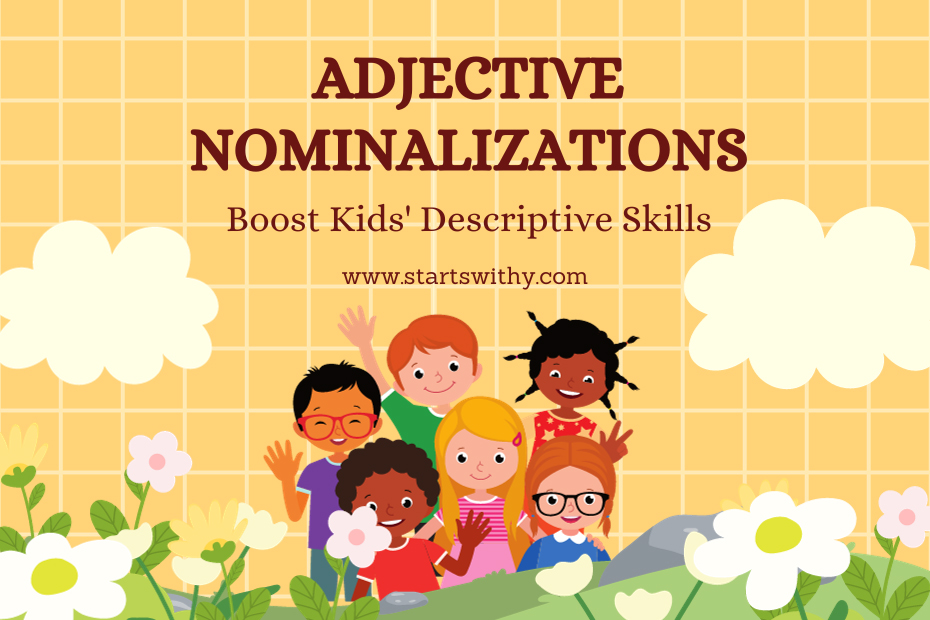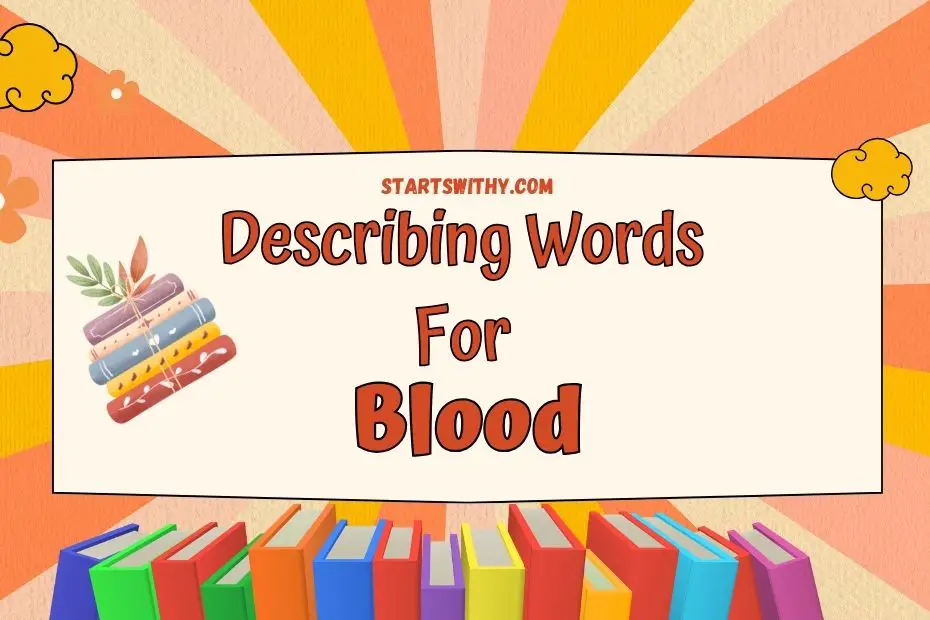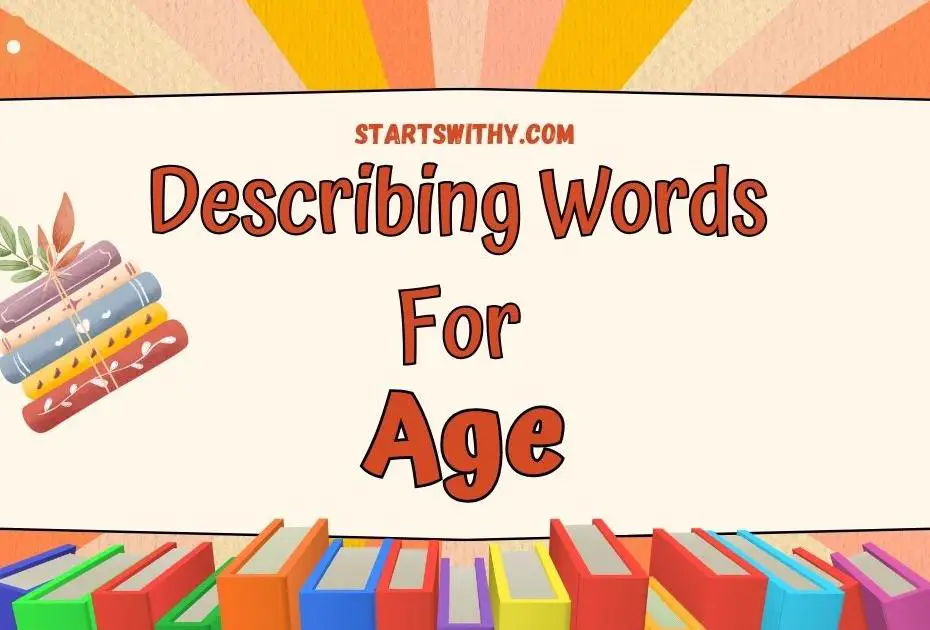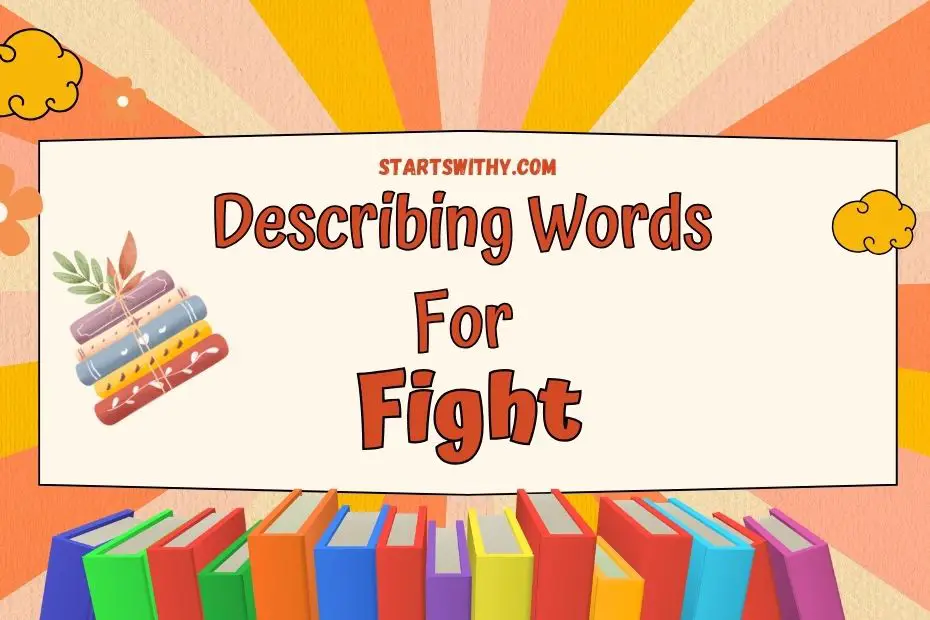Ever stumbled upon a phrase like “the running water” and wondered why ‘running’, typically a verb, is used to describe the noun ‘water’? Welcome to the intriguing world of adjective nominalizations, where verbs don’t just show action—they double as descriptors. It’s a linguistic twist that can add flavor to our sentences and make our language more dynamic.
What are Adjective Nominalizations?
As I delve deeper into the world of linguistics, it’s fascinating to explore the versatility of words, especially when it comes to teaching language to young minds. Adjective nominalizations are a prime example of this linguistic craftiness. At its core, an adjective nominalization is when a verb, which usually conveys an action, is transformed into an adjective to describe a noun more vividly.
Take the verb “run” for example. When I talk about a “running” commentary, I’m not suggesting that the commentary is physically sprinting. Instead, I’m using the action of running to give life to the concept of continuous speech. In the classroom, emphasizing these forms can make descriptions more tangible and relatable for children. They start to picture the commentary as something lively, akin to the energy of running.
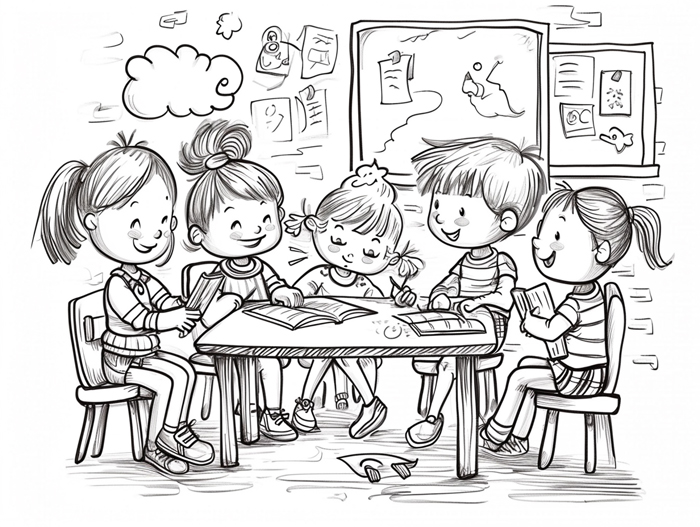
Another example is the word “talk.” In “talk show,” the verb “talk” has been nominalized, turning it into an adjective that describes the kind of show it is—one focused on conversation. This subtle shift from action to descriptor allows me to provide clearer contexts for nouns that might otherwise seem abstract.
Here are a few more examples:
- A “swimming” pool is not a pool that swims, but one meant for swimming.
- A “driving” range is a place designed for driving golf balls, not a range that drives.
Adjective nominalizations serve as a bridge between actions and descriptions, offering a playful yet instructive way to expand a child’s vocabulary. By recognizing and utilizing these forms, teachers can enhance lesson plans and engage students’ imaginations. It’s like painting with words; every stroke adds depth and color to the picture I’m trying to create in my student’s minds.
To further clarify, I often incorporate adjective nominalizations into everyday teaching tools:
- Flashcards: pairing images with descriptive terms.
- Storytelling: using these forms to create more vivid narratives.
- Games: implementing word matching activities that highlight the relationship between verbs and their nominalized adjectives.
By weaving these elements seamlessly into educational materials, teachers can foster a love for language while simplifying complex grammatical concepts.
Understanding Verb-Adjective Relationships
When I delve into the intricacies of language, I uncover the harmonious dynamics between verbs and adjectives. It’s essential to understand that we often see verbs in their primary role, which is to denote action, but there’s more to them. Verbs have the unique ability to dress up as adjectives and paint our nouns with an array of characteristics. This transformation, where verbs take on the role of describing a noun, brings a certain nuance to the way we convey information.
Let’s consider the verb ‘to dance’. Alone, it signifies action, but when modified into ‘dancing’, as in ‘dancing shoes’, it breathes life into the noun, providing us with a vivid image. These dancing shoes aren’t just any shoes; they’re made for dancing, they have a story, a purpose. Here’s where things get fascinating: the adjective form encapsulates both the action and the implied readiness for that action. This is the heart of verb-adjective relationships, where a single word pulls double duty.
In my experience, teachers find that introducing these relationships early helps young learners grasp more complex language structures as they grow. For example, when teaching children about the sun, I might say, “The sun is shining.” Shining is our verb, but what about “the shining sun”? Now it’s an adjective, and it’s telling us about the sun’s quality or state in a particular moment.
Imagine the possibilities in a classroom context. Children might not only talk about what they do but also describe nouns around them with the same words they use for actions. Words like ‘running’ streams, ‘singing’ birds, and ‘sleeping’ bags become fundamental learning tools. They bridge the gap between doing and describing, making language learning accessible and more engaging.
By incorporating verb-adjective relationships into teaching strategies, educators can allow learning to flourish. Interactive games, flashcards, and storytelling sessions that highlight these relationships can enhance vocabulary development. It turns passive observation into active learning, where children are not just hearing words but using them to construct meaning.
Examples of Adjective Nominalizations
As I delve into the realm of adjective nominalizations, it’s fascinating to see how these linguistic elements permeate our everyday speech. Take the word “dance,” commonly recognized as a verb. When we speak of a “dance routine,” we’ve transformed “dance” into an adjective that describes the type of routine. Similarly, “dream” transitions seamlessly from an action to a descriptive word in phrases like “dream job.” Understanding and teaching these subtle yet impactful changes can significantly enrich language development for young learners.
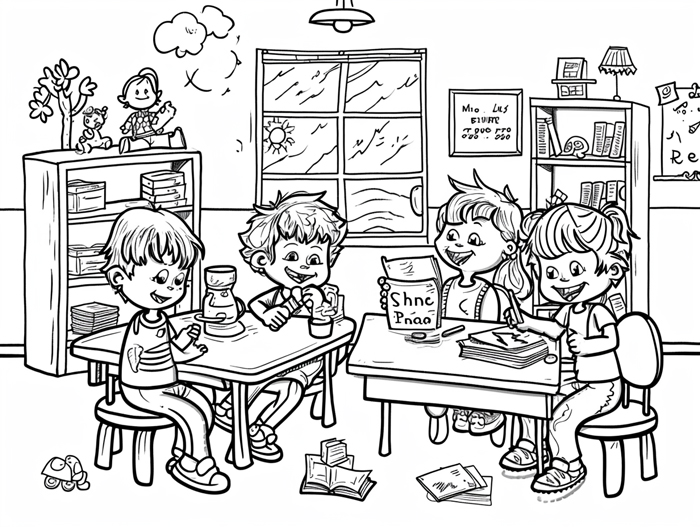
In a classroom setting, a variety of examples can be illustrative. Let’s consider the verb “sing.” When it morphs into an adjective, it can modify nouns such as “sing-along song” or “singing bird.” It’s crucial to show these transitions through concrete examples that kids can easily relate to and comprehend. Other instances that might resonate with children include:
- “Jump” leading to “jump rope” activity
- “Paint” forming “painting class”
- “Talk” giving rise to “talking doll”
These examples not only clarify the concept but also expand the vocabulary of young minds. Illustrating these transformations through visual aids can be particularly effective. I often employ colorful images and engaging activities that involve the words in action. This hands-on approach aids in cementing the understanding of how verbs can elegantly shift form to describe nouns.
Adjective nominalizations also appear in less obvious forms. The verb “to light” is a straightforward action word, but as an adjective, it can subtly change into “lighting fixture,” informing us about the type of fixture we’re referring to. These finer distinctions can be introduced as students become more comfortable with the basic concept.
Employing these verbal alchemies opens up a treasure trove of descriptive language possibilities. By harnessing this linguistic technique, preschool and kindergarten teachers can provide a foundation that allows children to express themselves with both simplicity and richness. It’s a testament to the power of language how a simple verb can take on a new life as an adjective, offering new dimensions to a child’s growing lexicon.
Benefits of Using Adjective Nominalizations
Teaching vocabulary through adjective nominalizations offers a myriad of advantages in early education settings. I’ve witnessed firsthand how these grammatical forms can boost linguistic development and offer learners a more colorful lexicon to draw from.
Firstly, adjective nominalizations allow children to compact complex ideas into simpler forms. By converting verbs, which denote actions or states, into adjectives, young minds learn to efficiently describe nouns. This is particularly useful when they’re trying to articulate their thoughts about the actions of a person or the attributes of an object. For example, the transformation of ‘decorate’ to ‘decorative’ helps children describe something that embellishes or enhances the beauty of another thing without the need for lengthy explanations.
Moreover, nominalizations cater to creative expression. Children delight in discovering that they can use words like ‘entertaining’ as opposed to the more mundane ‘fun’. This not only keeps their interest but also encourages them to explore new ways of expressing themselves. It’s a stepping stone towards a more varied and nuanced understanding of the language.
Additionally, the consistent use of these forms reinforces pattern recognition. When children understand that adding a suffix can change a verb to an adjective, they begin to apply this knowledge to new words they encounter. For example, they seamlessly grasp that someone who ‘explains’ can be ‘explanatory’, thus broadening their descriptive capacity.
Finally, integrating adjective nominalizations into instruction supports reading comprehension. As children read and encounter these descriptors, they can deduce the meaning of new words based on their understanding of related verbs. This boosts their confidence and capability in tackling increasingly complex texts.
In my experience, teachers can most effectively introduce adjective nominalizations through interactive and engaging activities. Games that match actions to their descriptive counterparts or storytelling exercises that use visual aids can tremendously aid in cementing this aspect of grammar in a child’s mind. It’s not just about learning a new way to describe something; it’s about building a foundation that will support their lifelong language journey.
Common Mistakes to Avoid with Adjective Nominalizations
When teaching adjective nominalizations, it’s easy to slip into common pitfalls that can hinder a child’s comprehension and retention. My aim is to help educators recognize these mistakes to ensure that learning is both effective and enjoyable.
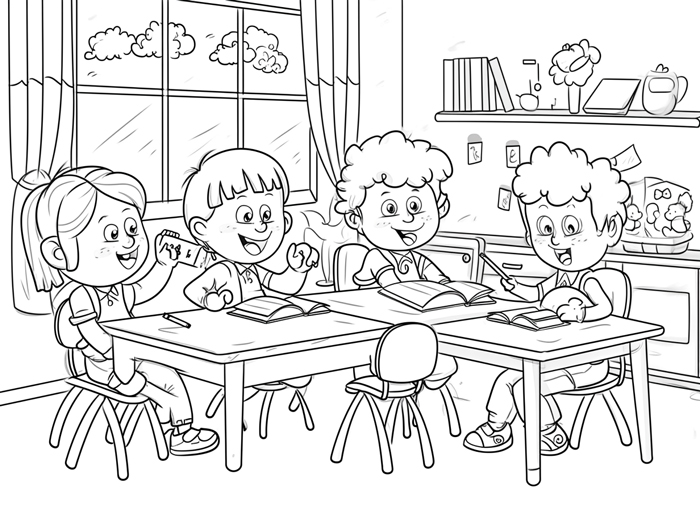
Overgeneralization is a frequent error. Young learners might apply a rule too broadly, turning verbs into adjectives in contexts where it’s not appropriate. For example, they might incorrectly nominalize “run” as “runned” instead of “run.” To prevent this, I’ve found it helpful to provide specific examples and emphasize exceptions to the rules.
Another challenge is the misapplication of tense. Children may struggle to understand that many adjective nominalizations are derived from the past participle form of verbs. This leads to incorrect formations like “fall” becoming “falled” when the correct adjective would be “fallen.” Clear and simple explanations supported by visuals can guide them toward the correct usage.
Ambiguity also crops up regularly. Some verbs can lead to multiple adjective forms with distinct meanings. Take “interest,” for instance. It could lead to “interested,” implying an emotional investment or “interesting,” meaning something that captures attention. Distinguishing these nuances is critical, and I make it a point to use clear examples to illustrate the differences.
To solidify understanding, I incorporate interactive exercises that encourage active participation. Here are some strategies that have proven effective in my experience:
- Matching games pairing verbs with their nominalized adjectives
- Fill-in-the-blank sentences to practice correct forms
- Storytelling sessions where children create narratives using adjective nominalizations
These activities allow learners to engage with the linguistic concept in a dynamic context, fostering better memory retention and practical application. By prioritizing hands-on learning and paying attention to common errors, children can grasp the subtleties of adjective nominalizations, enhancing their descriptive abilities at an early age.
Conclusion
Mastering adjective nominalizations can significantly bolster a child’s linguistic prowess. By transforming verbs into descriptors, young learners gain the tools to articulate their world with greater precision and creativity. It’s essential to sidestep common pitfalls and embrace techniques that make learning this concept engaging. When children grasp how to use verbs as adjectives, they unlock a new dimension of expression, one that’s both simple and sophisticated. Let’s equip our young wordsmiths with this skill early on, fostering a love for language that’s as dynamic as it is descriptive.
